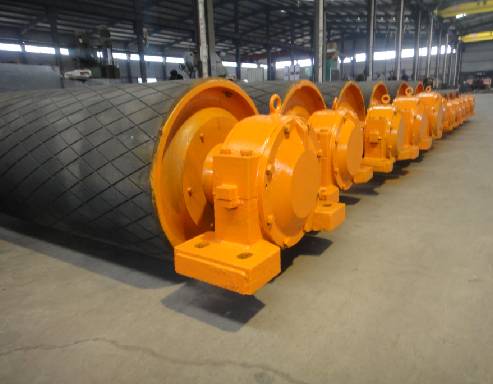 Afrikaans
Afrikaans  Albanian
Albanian  Amharic
Amharic  Arabic
Arabic  Armenian
Armenian  Azerbaijani
Azerbaijani  Basque
Basque  Belarusian
Belarusian  Bengali
Bengali  Bosnian
Bosnian  Bulgarian
Bulgarian  Catalan
Catalan  Cebuano
Cebuano  Corsican
Corsican  Croatian
Croatian  Czech
Czech  Danish
Danish  Dutch
Dutch  English
English  Esperanto
Esperanto  Estonian
Estonian  Finnish
Finnish  French
French  Frisian
Frisian  Galician
Galician  Georgian
Georgian  German
German  Greek
Greek  Gujarati
Gujarati  Haitian Creole
Haitian Creole  hausa
hausa  hawaiian
hawaiian  Hebrew
Hebrew  Hindi
Hindi  Miao
Miao  Hungarian
Hungarian  Icelandic
Icelandic  igbo
igbo  Indonesian
Indonesian  irish
irish  Italian
Italian  Japanese
Japanese  Javanese
Javanese  Kannada
Kannada  kazakh
kazakh  Khmer
Khmer  Rwandese
Rwandese  Korean
Korean  Kurdish
Kurdish  Kyrgyz
Kyrgyz  Lao
Lao  Latin
Latin  Latvian
Latvian  Lithuanian
Lithuanian  Luxembourgish
Luxembourgish  Macedonian
Macedonian  Malgashi
Malgashi  Malay
Malay  Malayalam
Malayalam  Maltese
Maltese  Maori
Maori  Marathi
Marathi  Mongolian
Mongolian  Myanmar
Myanmar  Nepali
Nepali  Norwegian
Norwegian  Norwegian
Norwegian  Occitan
Occitan  Pashto
Pashto  Persian
Persian  Polish
Polish  Portuguese
Portuguese  Punjabi
Punjabi  Romanian
Romanian  Russian
Russian  Samoan
Samoan  Scottish Gaelic
Scottish Gaelic  Serbian
Serbian  Sesotho
Sesotho  Shona
Shona  Sindhi
Sindhi  Sinhala
Sinhala  Slovak
Slovak  Slovenian
Slovenian  Somali
Somali  Spanish
Spanish  Sundanese
Sundanese  Swahili
Swahili  Swedish
Swedish  Tagalog
Tagalog  Tajik
Tajik  Tamil
Tamil  Tatar
Tatar  Telugu
Telugu  Thai
Thai  Turkish
Turkish  Turkmen
Turkmen  Ukrainian
Ukrainian  Urdu
Urdu  Uighur
Uighur  Uzbek
Uzbek  Vietnamese
Vietnamese  Welsh
Welsh  Bantu
Bantu  Yiddish
Yiddish  Yoruba
Yoruba  Zulu
Zulu tail drum pulley
The Importance of Tail Drum Pulleys in Conveyor Systems
Conveyor systems are a staple in industries such as mining, manufacturing, and logistics, enabling the efficient transport of materials from one location to another. Among the many components that make up these systems, the tail drum pulley plays a crucial role in their functionality and reliability. Understanding the significance of tail drum pulleys helps us appreciate their contribution to the overall performance of conveyor systems.
At its core, a tail drum pulley is situated at the end of the conveyor belt system, serving multiple essential functions. Primarily, it is responsible for maintaining the tension of the conveyor belt, which is vital for operational efficiency. Proper tension ensures that the belt remains taut, reducing slippage and wear while promoting smooth movement. This functionality significantly extends the lifespan of the conveyor belt, leading to reduced maintenance costs and less frequent replacements.
Moreover, tail drum pulleys are designed to facilitate the return of the conveyor belt, allowing it to travel back to its original position after transporting materials
. The design and placement of these pulleys are critical because they directly affect the overall alignment and stability of the conveyor system. A misaligned tail drum pulley can cause the belt to veer off track, leading to inefficiencies and potential hazards in the workplace.tail drum pulley

Another important aspect of tail drum pulleys is their capacity to absorb shock and vibration. As materials are transported along the conveyor belt, the impact of heavy loads can generate significant forces. Tail drum pulleys are engineered to dampen these impacts, preventing strain on the belt and supporting structure. This shock-absorbing capability is vital for maintaining the integrity of the conveyor system, particularly in harsh operating environments commonly found in mining and heavy manufacturing.
In terms of design, tail drum pulleys come in various materials and configurations to best suit the specific application. Common materials include steel, rubber, and composite materials, each offering unique advantages in terms of durability and performance. Additionally, pulleys can be grooved or crowned, which aids in keeping the belt aligned and further enhances its functional performance.
Regular maintenance of tail drum pulleys is essential for prolonging their lifespan and ensuring the smooth operation of conveyor systems. Routine inspection for wear and tear, along with timely lubrication, can prevent many of the issues that arise during operation.
In conclusion, tail drum pulleys are a vital component of conveyor systems, contributing to belt tension, alignment, shock absorption, and the overall efficiency of material transport. Understanding their significance can lead to better maintenance practices and improved performance of industrial operations. As industries continue to evolve, ensuring the reliability and efficiency of components like tail drum pulleys will remain central to successfully meeting the demands of modern logistics and material handling.
-
Revolutionizing Conveyor Reliability with Advanced Rubber Lagging PulleysNewsJul.22,2025
-
Powering Precision and Durability with Expert Manufacturers of Conveyor ComponentsNewsJul.22,2025
-
Optimizing Conveyor Systems with Advanced Conveyor AccessoriesNewsJul.22,2025
-
Maximize Conveyor Efficiency with Quality Conveyor Idler PulleysNewsJul.22,2025
-
Future-Proof Your Conveyor System with High-Performance Polyurethane RollerNewsJul.22,2025
-
Driving Efficiency Forward with Quality Idlers and RollersNewsJul.22,2025





























